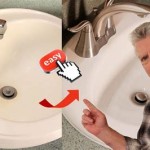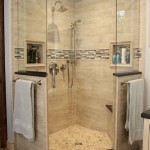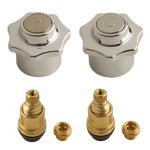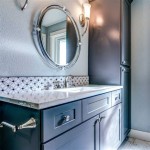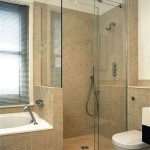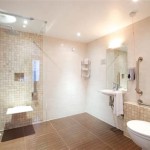Non-Slippery Bathroom Floor Tiles: Ensuring Safety and Style
Bathrooms are inherently wet spaces, making the choice of flooring crucial for safety and aesthetics. Non-slip bathroom floor tiles provide a safe and secure surface that minimizes the risk of accidents, especially in areas prone to water spillage and moisture.
Why Choose Non-Slippery Bathroom Tiles?
Non-slip tiles offer several compelling benefits:
- Safety: They reduce the likelihood of slips and falls, which are common in wet bathroom environments.
- Peace of mind: Knowing that your bathroom floor is safe for all users, including children and the elderly, provides peace of mind.
- Durability: Non-slip tiles are typically made from durable materials that can withstand heavy foot traffic and moisture.
- Easy maintenance: These tiles are easy to clean and maintain, making them a practical choice for busy bathrooms.
Types of Non-Slippery Bathroom Tiles
There are various types of non-slip bathroom tiles available, each with its unique characteristics:
- Porcelain: Porcelain tiles are known for their durability, water resistance, and slip resistance.
- Ceramic: Ceramic tiles offer a wide range of designs and are less expensive than porcelain tiles, but they may not be as durable.
- Stone: Natural stone tiles, such as marble and granite, provide a luxurious look and can be non-slip when treated with a slip-resistant sealant.
- Rubber: Rubber tiles are highly non-slip and available in various colors and patterns, making them a popular choice for commercial bathrooms.
- Vinyl: Vinyl tiles are waterproof, non-slip, and easy to install, making them a budget-friendly option for bathrooms.
Choosing the Right Tiles
When choosing non-slip bathroom tiles, consider the following factors:
- Coefficient of Friction (COF): This measures the tile's resistance to slipping. A COF of 0.6 or higher is generally considered safe for wet areas.
- Surface Texture: Tiles with a rough or textured surface provide better slip resistance than smooth tiles.
- Tile Size: Smaller tiles have more grout lines, which can create a non-slip surface.
- Grout Color: Dark grout can highlight uneven tile edges, increasing the risk of tripping.
- Budget: The cost of non-slip tiles varies depending on the material and design.
Installation and Maintenance
Proper installation and maintenance are crucial for the safety and longevity of non-slip bathroom tiles:
- Professional Installation: Ensure that tiles are installed according to manufacturer's specifications by a qualified professional.
- Regular Cleaning: Clean tiles regularly with a non-abrasive cleaner to remove dirt and grime.
- Slip-Resistant Treatment: Some tiles may require additional treatment with a slip-resistant sealant to maintain their slip resistance.
- Grout Maintenance: Regularly seal grout to prevent moisture penetration and ensure a secure grip.
Conclusion
Non-slip bathroom floor tiles are an essential element in creating a safe and visually appealing bathroom space. By carefully selecting and installing the appropriate tiles, you can minimize the risk of accidents, enhance the overall aesthetics of your bathroom, and enjoy peace of mind knowing that your space is secure for everyone.

Anti Skid Tiles For Bathroom Kitchen Slip Floor Orientbell

6 Reasons To Select Non Slip Bathroom Floor Tiles By Agl

Safe Bathrooms Have Non Slip Floor Tiles

Best Nonslip Shower Floor Tile Ideas 2024 Updated Page Country Floors

How To Choose The Best Non Slip Bathroom Floor Materials

Non Slip Bathroom Floor Tiles Manufacturers And Suppliers Whole Hanse

Best Nonslip Shower Floor Tile Ideas 2024 Updated Page Country Floors

Non Slip Coating For Ceramic Tiles Arad Branding

Anti Skid Tiles For Bathroom Kitchen Slip Floor Orientbell

Best Anti Slip Tiles For Bathrooms In Ni Engineering
See Also

